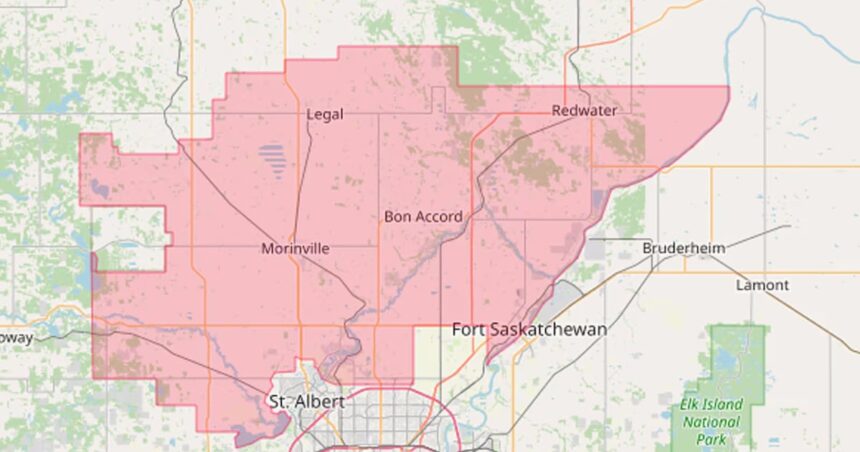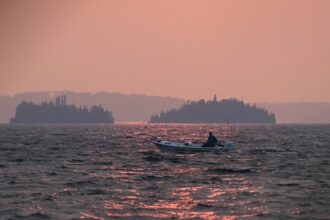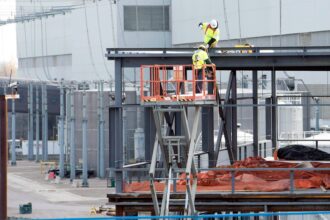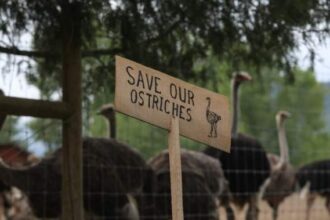A fast-moving wildfire has triggered an emergency evacuation northeast of Edmonton, forcing hundreds of residents to flee their homes with little warning as flames threatened communities across the Smoky Lake County region on Sunday afternoon.
Provincial officials issued a critical emergency alert just after 2:30 p.m., warning that the wildfire had become “an imminent threat to life and safety” as winds gusting over 40 km/h pushed flames toward populated areas. According to Alberta Wildfire information officer Josée St-Onge, the blaze has already consumed more than 1,200 hectares and continues to grow at an alarming rate.
“This fire is exhibiting extreme behavior due to the combination of unusually dry conditions, high temperatures, and strong winds,” St-Onge told CO24 News. “We’re utilizing every available resource including ground crews, heavy equipment, and aerial support, but residents need to take evacuation orders seriously.”
Smoky Lake County, located approximately 115 kilometers northeast of Edmonton, declared a state of local emergency while officials established evacuation centers in nearby communities, including St. Paul and Redwater. The Alberta Emergency Management Agency reported that approximately 320 residents had registered at evacuation centers by early evening.
Emergency services are conducting door-to-door notifications in areas directly threatened by the fire, while RCMP have established checkpoints on major highways to redirect traffic away from dangerous zones. Highway 28 has been closed in both directions between Smoky Lake and Vilna as smoke severely reduces visibility.
Regional Fire Chief Scott Franchuk emphasized the speed with which the situation deteriorated. “This morning we were monitoring hotspots, and by early afternoon, we had a major wildfire threatening multiple communities,” he said during an emergency press briefing. “The conditions are unfortunately ideal for extreme fire behavior.”
Early assessments indicate that at least three structures have been lost to the flames, though officials caution this number could rise as the situation develops. Power outages are affecting several communities as transmission infrastructure has been damaged.
Alberta Premier Danielle Smith addressed the situation on social media, stating that provincial resources had been mobilized to support local emergency response efforts. “We are closely monitoring this dangerous situation and have directed all necessary provincial supports to the region,” Smith wrote. “The safety of Albertans remains our top priority.”
Climate scientists from the University of Alberta note that this early-season wildfire activity follows one of the driest winters on record for central Alberta, creating conditions reminiscent of the devastating 2023 wildfire season that saw unprecedented destruction across the province.
“What we’re seeing is consistent with climate change projections for western Canada,” explained Dr. Melissa Thompson, climatologist at the University of Alberta. “Earlier fire seasons, more extreme fire behavior, and larger areas burned are all trends we’ve observed accelerating over the past decade.”
For residents forced to evacuate, the experience has been harrowing. Local resident Thomas Weber described leaving his home of 22 years with only minutes to gather essentials. “The sky went from clear to orange in what felt like minutes,” Weber said. “I grabbed our important documents, some clothes, and our pets. Everything else might be gone.”
Alberta Wildfire officials anticipate challenging conditions to continue through at least mid-week, with little precipitation in the forecast and temperatures expected to remain above seasonal averages. Additional firefighting resources from neighboring provinces may be requested if the situation continues to deteriorate.
As Alberta faces what could be another challenging wildfire season, how will communities adapt to this seemingly new normal of earlier, more intense fire activity? The answer may determine the future viability of many rural communities across western Canada.










